Dual GLP-1/GIP Receptor Agonist Shows Decreases in Hemoglobin A1c
Investigators find modest improvements in body weight at week 26 for CT-868 compared with the placebo.
In a phase 2 (
“The administration of GLP-1 agonists (GLP-1As) can sufficiently replace the action of incretins and lower glucose levels. Since their debut, these novel agents have formed an important armamentarium in the management of T2DM,” authors of a review published in Diabetes, Metabolic Syndrome, and Obesity said.2 “Lately, attention has been directed to GIP and its role in glucose homeostasis, and efforts are underway to develop compounds that mimic GIP actions in addition to those of GLP-1.”
GLP-1/GIPs have shown favorable outcomes in diabetes, significantly improving hemoglobin A1c, which varies by therapeutic agent. Further, there are also benefits in cardiovascular effects and weight management.2
The current study, which was a 26-week, randomized, double-blind trial, was conducted at 5 sites in Mexico between February 2022 and February 2023 and included patients aged 18 to 75 years with a type 2 diabetes diagnosis for 6 or more months. Further, participants had inadequately controlled hemoglobin A1c with diet and/or exercise or with metformin and a body mass index of 27 kg/m²2 or more. Treatment included the placebo, low-dose CT-686, or the maximum tolerated dose of CT-868. The primary end point was change in hemoglobin A1c from baseline to weeks 12 and 26, and secondary outcomes were change in mean body weight and fasting plasma glucose, both at weeks 12 and 26.1,3
Investigators included 103 patients, with 25 who received the 1.75 mg dose, 51 who received the 4 mg dose, and 27 who received the placebo. All patients were either Hispanic or Latino, with a mean age of 50 years and 62.1% were female. At baseline, investigators reported a body weight of 92 kg, a mean BMI of 25.3 kg/m2, and a mean hemoglobin A1c of 8.12%. Investigators found that hemoglobin A1c significantly improved at week 26 for both treatment arms compared with the placebo, with the least squares mean for change from baseline ranging from –1.18%-points to –1.81%-points for the treatment groups compared with 0.43% for the placebo. Further, at week 26, approximately 52% to 77.8% of individuals receiving CT-868 had a hemoglobin A1c of less than 7% compared with 24% for the placebo.1
As for weight, there were modest improvements in body weight at week 26 for the study drug compared with the placebo, with 51.7% and 22.7% receiving CT-868 or the placebo, respectively, achieving 5% or more weight loss. There were also clinically meaningful improvements in low-density lipoprotein, nonhigh-density lipoprotein, and apolipoprotein B for the study drug compared with the placebo. Treatment-emergent adverse effects were similar across treatment arms, with the most common being diarrhea, nausea, constipation, and decreased appetite.1
“To our knowledge, this is the first study assessing the efficacy and safety profile of a fully biased dual GLP-1/GIP receptor agonist in this population where T2D is inadequately controlled with metformin monotherapy,” the study authors said.1 “These results provide dose–response information for CT-868 that will be used to optimize ongoing trials of CT-868 in participants with type 1 diabetes (T1D).”
READ MORE:
Ready to impress your pharmacy colleagues with the latest drug information, industry trends, and patient care tips? Sign up today for our
REFERENCES
1. Chakravarthy MV, Elliott MA, Acosta L, et al. Efficacy and safety of CT-868, a novel, fully biased, dual glucagon-like peptide-1/glucose-dependent insulinotropic polypeptide receptor agonist, in type 2 diabetes: A double-blind, randomized placebo controlled phase 2 trial. Diabetes Obes Metab. Published online August 5, 2025. doi:10.1111/dom.70006
2. Rizvi AA, Rizzo M. The Emerging Role of Dual GLP-1 and GIP Receptor Agonists in Glycemic Management and Cardiovascular Risk Reduction. Diabetes Metab Syndr Obes. 2022;15:1023-1030. Published 2022 Apr 5. doi:10.2147/DMSO.S351982
3. A study of CT-868 in overweight and obese participants with type 2 diabetes mellitus. ClinicalTrials.gov identification: NCT05110846. Updated July 26, 2022. Accessed August 6, 2025. https://clinicaltrials.gov/study/NCT05110846
Newsletter
Pharmacy practice is always changing. Stay ahead of the curve with the Drug Topics newsletter and get the latest drug information, industry trends, and patient care tips.






































































































































